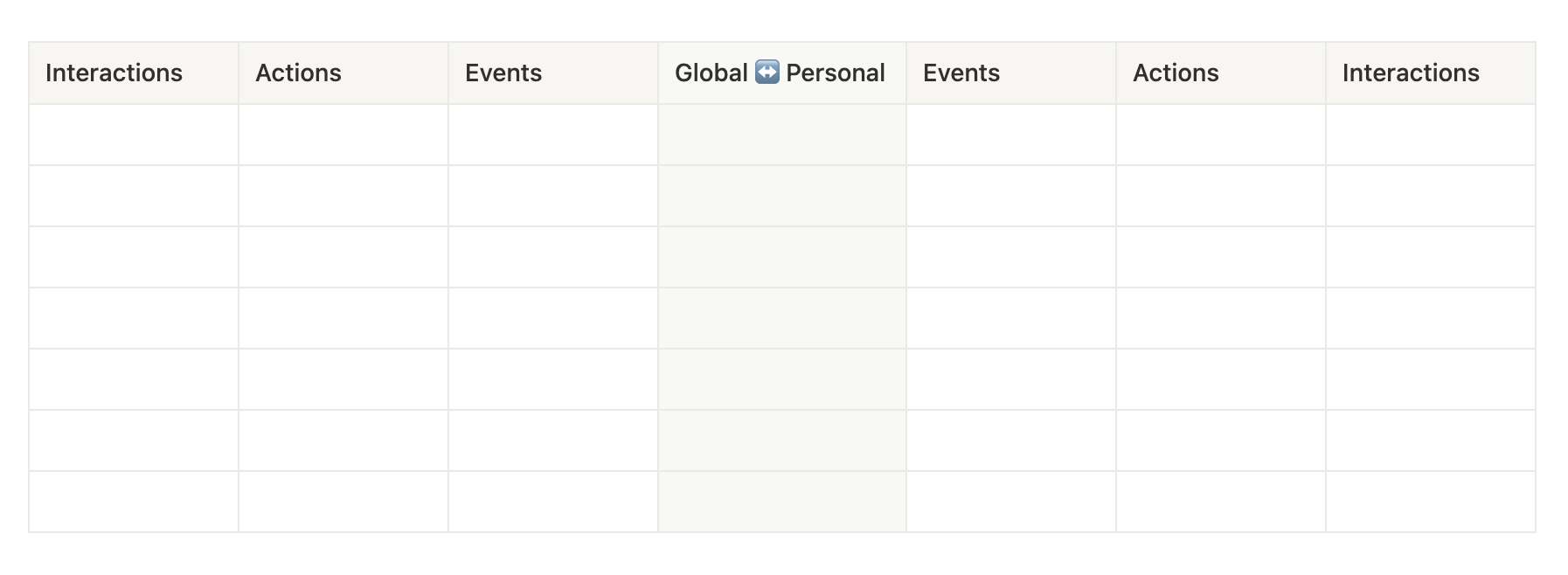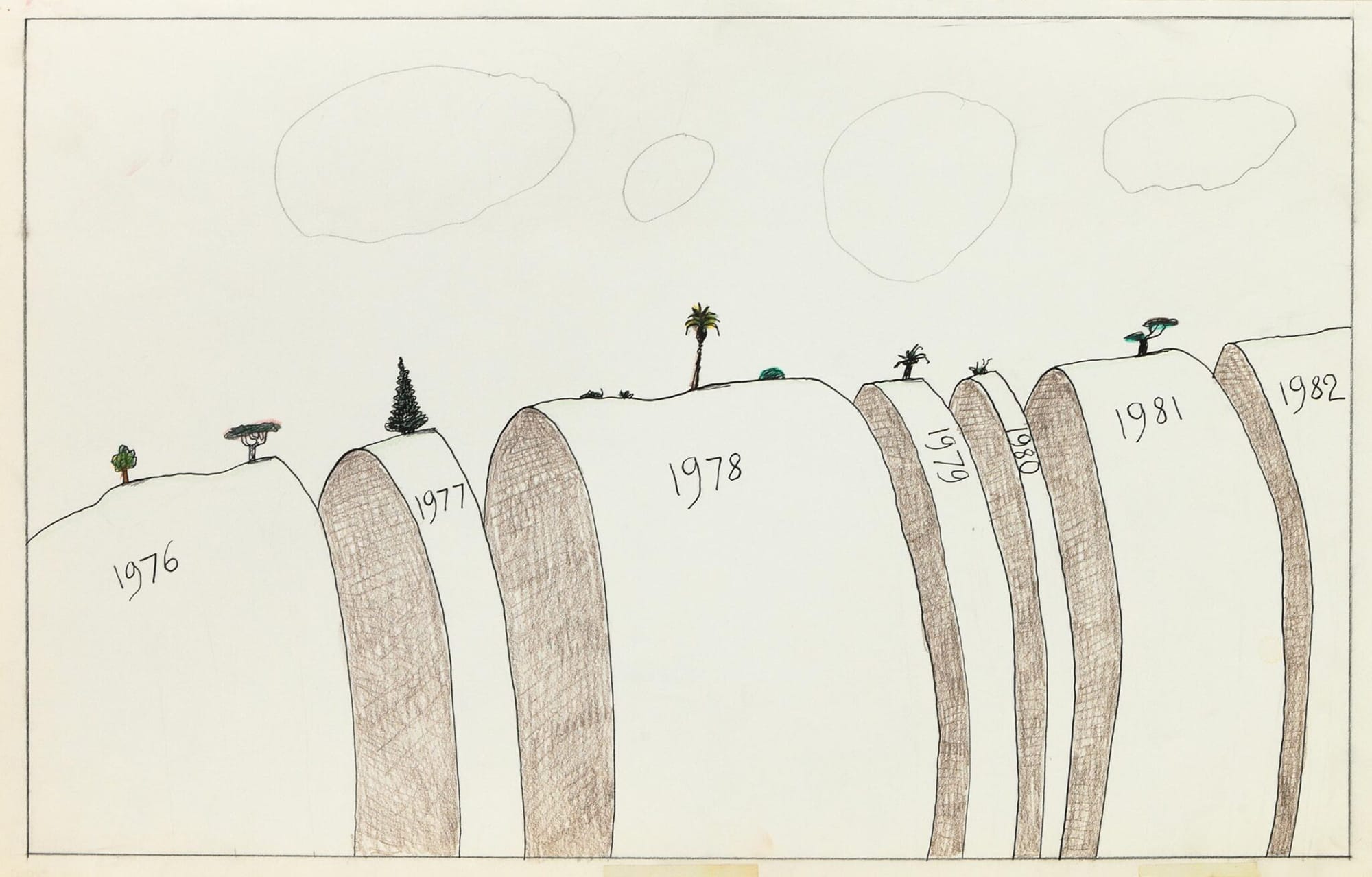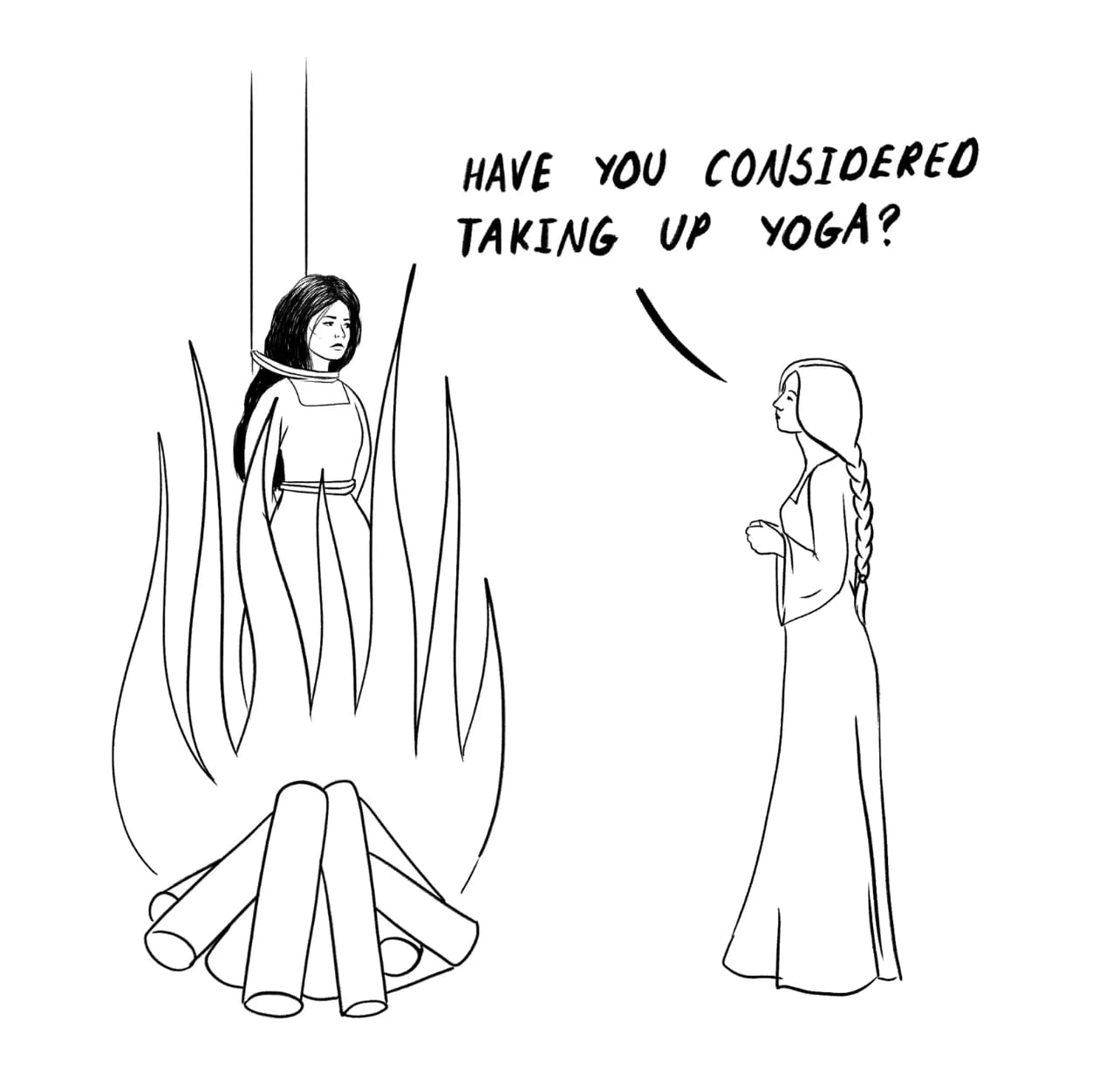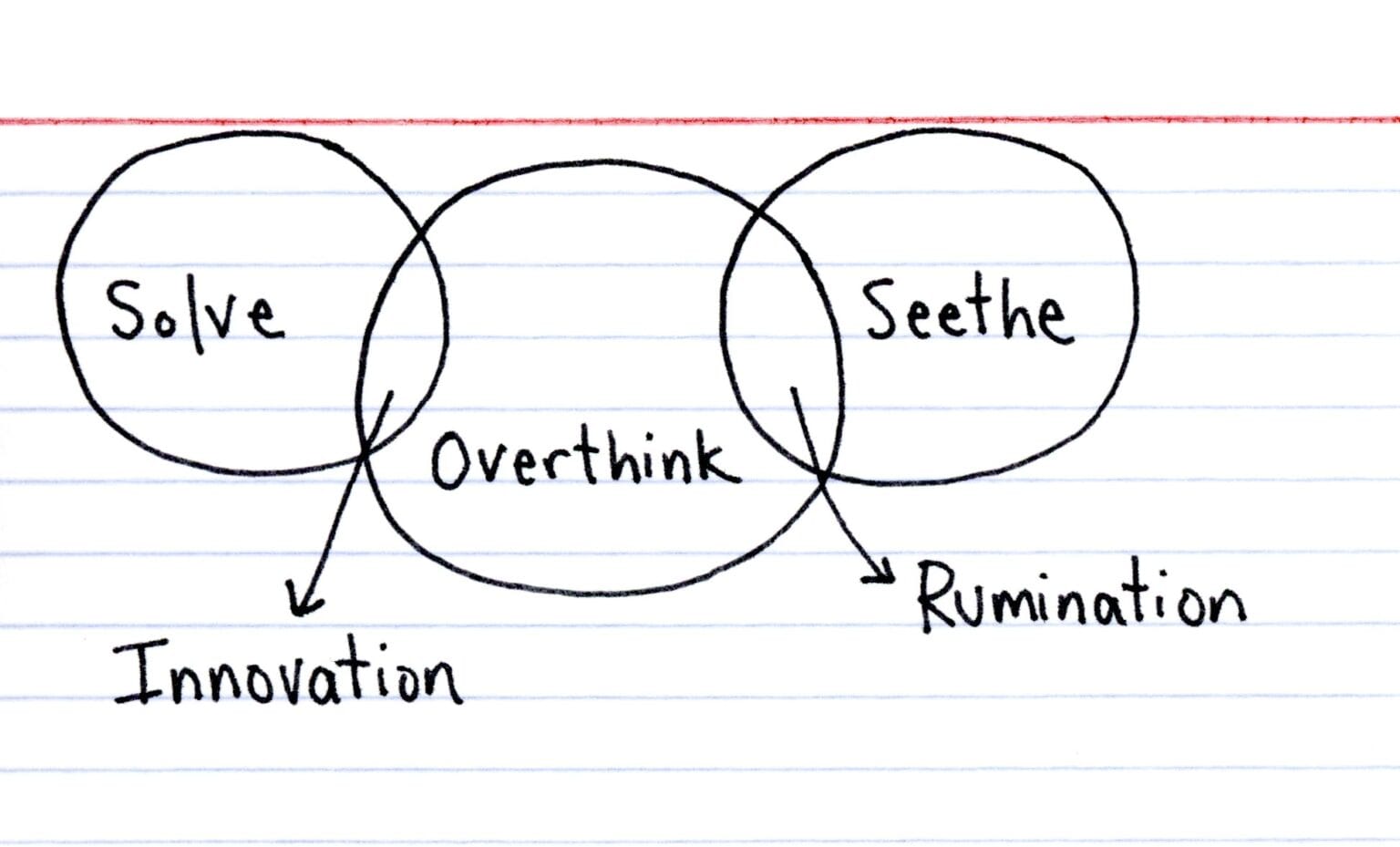How To Put Your Life In Perspective
In the first part of this series, we mapped your history. Now we'll move outward.

Set Up ⛵️
Our first map was a simple, four-column table of events, actions, interactions, and their dates. That worked well for quick self-reflection, but now we want to capture context.
Create a new table with six columns:
- Personal Date
- Historical Date
- Title
- Summary
- Category
- Interval

Now we have a dataset, a single source of truth for all future versions of your map, which will be crucial for our experiments going forward.
At this stage, I’d recommend using spreadsheet software because it’ll make future edits easier. For instance, at some point, you’ll probably want to add a Sub-Category column for data types (books, music, shows, etc.) or split the Summary column to draw clear lines between history (why it matters objectively) and personal impact (why it matters to you). But, in both cases, that’s too much detail for now. As before, we want to add and move between entries quickly, which is hard to do when your columns don’t fit on the screen. Remember, we want a process that feels like writing, not tedious data entry.
Intervals 🗺️
Adding a historical date creates an immediate path out of your head and into the world. Now, you can move between biographical and historical time with ease, shifting between them as your questions and moods demand.
Begin by adding your favorite things.
- Add the first comes to mind and find its birth date.
- Locate your touchstones: the books, media, and pop culture moments that defined pivotal moments in your life.
- Identify your lifelines: what you turn to during periods of uncertainty, stress, or despair to find clarity or comfort.
How many days, months, and years lie between you and the source? How many things had to happen for you to find the source? Were you behind the times, ahead of your time, or right on time? What unique gifts can you give in return?
The more questions like this you ask, the more gratitude and sense of connection you’ll feel and the more perspective you’ll get on your own experience. Before you know it, you’ll go from listing personal favorites to tracing the history of genres, industries, and countries and finding new roles within them. Follow the line, wherever it leads.
In searching, you may find new resources that lend additional perspective, reveal the higher-level interest or need behind your memories, or answer the question you’re asking now. In my case, I found three fields (media archeology, astrobiology, and history and philosophy of science), a community (DAIR Possible Futures), a hidden talent (writing speculative fiction), and the thread that ties together all of my interests and work (time). You never know what new discoveries you can make by contemplating the past.
Anchors ⚓️
Now that you’re feeling fuzzy and hopeful, identify the detours, failures, and missed opportunities that have defined your life — the dark corners you’d rather forget — and turn on the lights:
- What people or resources appeared in your life because of those missteps?
- What solutions appeared at the exact moment you needed them?
- What would you never have found without those setbacks?
- What did you do on the day after disruption?
- When did you miss an opportunity — and find a better one? When did missing it not matter at all?
Here, we’re aiming to reframe failure, gauge how you respond to setbacks, and train your mind look for options and resources under stress. Keep it light, though. Set a timer for 5-15 minutes for each point and move on.
Shared Histories 🪢
Now get beyond yourself entirely.
- What local, national, or global events have shaped your community or generation?
- What were your friends, family members, and rivals doing during pivotal events in the world?
- Are there any historical figures that started as early or late as you? What was his, her, or their trajectory compared to yours?

The point here isn’t to minimize or dismiss your experience. We’re not going for a “Someone has it worse”, “When I was your age…”, or “Just focus on what you can control” lecture. We want understanding, and more importantly, room for compassion and forgiveness, especially for yourself. We also want to avoid hindsight bias, our tendency to view the progression of events as inevitable once facts are known. How could things have gone differently, given what was known at the time? Did you actually screw up? Or are you just a human being with limited time, attention, and access to insider information?

If you're wasting time regretting what you studied in college or wondering why it took you so long to solve a problem, it may help to consider how the economy was being shaped by forces beyond your awareness and why you had a harder time getting answersthan others. That said, avoid the temptation to place blame and use the information to identify what to pay attention to now:
- How can you increase your capability?
- How can you expand what you can control?
- What should you keep?
- What should you leave behind?
- What questions are never going to be answered?
Living 🤽♀️

Don't create this dataset in one go. Expect to spend several weeks on it. Set hard limits on how long you spend on it each day, and punctuate the end of each session with action, either by doing something new or doing a counterfactual.
Here are some ideas for bringing your what-ifs and shoulda-coulda-wouldas into the present and taking action:
- Find the loops you didn’t close — the books, hobbies, and friends you let go — and pick one to close. Finish the book. Dust off the instrument. Set up a coffee date with an old friend. If and when regret sets in, accelerate closure by using what you’ve learned since then to get back to now. What are you going to do next time?
- Read, listen, watch, or do the opposite of what you did back then.
- Explore a past interest in a new form, like going snowboarding instead of playing a snowboarding game
Wrap Up 🏝️
Take a break. Next time, we’ll explore how to get your life in shape. In the meantime, here's a list of references to practice the skills we've learned:
Further Reading
- Annie Duke, Thinking In Bets (2017)
- Emily P. Freeman, How To Walk Into A Room (2024)
- Patricia Lustig, Strategic Foresight (2015)
- Claudia Hammond, Time Warped (2011)
- James Gleick, Time Travel: A History (2016)
- Quentin Deluermoz, Pierre Singaravélou, and Stephen W. Sawyer, A Past of Possibilities: A History of What Could Have Been(2021)